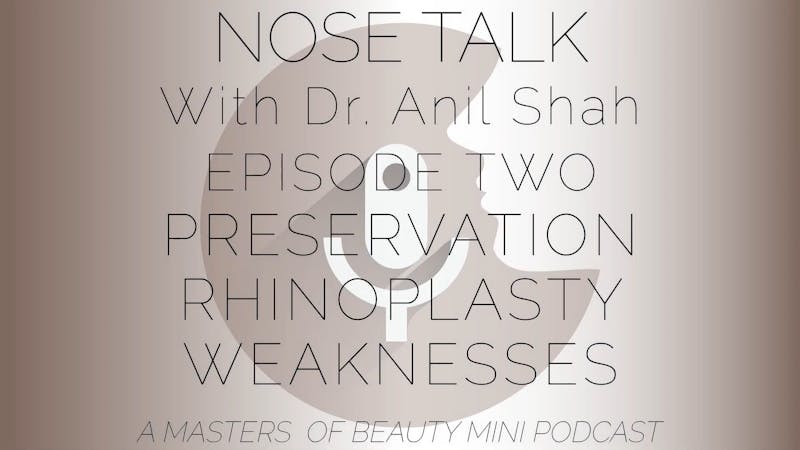
Posted by Dr. Anil R. Shah
This audio podcast has been transcribed using an automated service. Please forgive any typographic errors or other transcription flaws.
So I’m talking about the weaknesses of preservation rhinoplasty as an approach. So this approach is when you take structure from the inside of the nose and drop down the outside, hoping to mimic and keep the same look of the nose, AKA preserving the roof of your nose and dropping everything else. This makes sense for some noses, but for a lot of noses, they may not. Here’s some noses in particular where it doesn’t work. So if the bridge of your nose or the door also noticed the dorsum has some slight irregularities on it. Well, if you drop the bottom of the nose, guess what, you’re still going to have those irregularities. So if you have irregularities along the bridge of your nose, preservation, rhinoplasty is probably not right for you. If your nose is slightly wider than you like, then preservation, rhinoplasty is also not the right approach as you drop your bridge.
The nose tends to get wider, particularly in the middle third. So patients who don’t like the width of their nose are typically not candidates for preservation, rhinoplasty, uh, for patients with large bony issues with their nose. So if you’re palpating your bridge and you notice that most of your problem with your nose is the bony component. You’re also probably not a candidate for preservation rhinoplasty. So, uh, in general, it’s an okay technique for select patients. Those are patients who love the front of their nose, love the lines of the front of their loan nose. Um, but just want to kind of drop it down for that right approach. These techniques can look good on the table. However, the, some issues with preservation rhinoplasty, I do use it in my practice, but I again use it in select cases to make sure my patients get the best of both worlds.

